 Nothing sprouts an argument among pilots quicker than a regulation. And the bud bursts into full flower when the argument is over the rules surrounding "known icing conditions." A look at the history of this controversial phrase reveals a strange mixture of clarity and contradiction and offers a set of cautionary tales to those who would take naked, or scantily-clad, airplanes into cold climes.
Nothing sprouts an argument among pilots quicker than a regulation. And the bud bursts into full flower when the argument is over the rules surrounding "known icing conditions." A look at the history of this controversial phrase reveals a strange mixture of clarity and contradiction and offers a set of cautionary tales to those who would take naked, or scantily-clad, airplanes into cold climes.
The Bowen Decisions
It may come as a surprise to some hangar debaters that the legal definition of "known icing conditions" has been clearly laid down and consistently upheld for at least 27 years. In 1974, an unfortunate commercial pilot came before the National Transportation Safety Board to appeal an unfavorable ruling he had received a few months earlier at the hands of an Administrative Law Judge. Having crashed a Bellanca on the airport at Marion, Ind., in December 1972, he had been judged guilty of careless operation when he violated an aircraft operating limitation that prohibited flight into "known icing conditions."
Although the cause of the accident was disputed at the trial, there was no doubt that the airplane had ice on it when it hit the ground and that the pilot had been briefed about a SIGMET for his route of flight forecasting "isolated severe and mixed icing in clouds" and precipitation along his route. In rejecting the airman’s appeal, the NTSB determined that the cause of the accident was irrelevant. It also didn’t matter whether the flight ever actually encountered icing. The mere fact that the pilot flew into an area of forecast icing conditions in an unequipped aircraft was enough to sustain a violation. In this landmark ruling the board announced: "We do not construe the adjective ‘known’ to mean that there must be a near certainty that icing will occur, such as might be established by pilot reports. Rather we take the entire phrase to mean that icing conditions are being reported or forecast in reports which are known to a pilot, or of which he should reasonably be aware."\1 Thus the word "known" refers not to the ice that you "know" about because it is forming right now on some airplane somewhere, but to the information available to the pilot before and during the flight — and that might be any information, including a forecast.
 This principle was reaffirmed three months later when the pilot petitioned the board for reconsideration of his case. This time he was joined by a prominent aviation organization that supported his effort to have the ruling overturned. Together, they argued that the board had erred in its definition of "known icing conditions." In denying this petition, however, the board noted that "to construe the phrase in question to mean that the pilot of an aircraft not equipped with anti-icing devices could fly into an area for which icing had been forecast, but for which there was no pilot report of an encounter with icing, would be to render that phrase largely meaningless and of little effect as a safety measure."\2
This principle was reaffirmed three months later when the pilot petitioned the board for reconsideration of his case. This time he was joined by a prominent aviation organization that supported his effort to have the ruling overturned. Together, they argued that the board had erred in its definition of "known icing conditions." In denying this petition, however, the board noted that "to construe the phrase in question to mean that the pilot of an aircraft not equipped with anti-icing devices could fly into an area for which icing had been forecast, but for which there was no pilot report of an encounter with icing, would be to render that phrase largely meaningless and of little effect as a safety measure."\2
In its denial the board also inserted a footnote discouraging those who would use qualifying phrases such as "chance of," "occasional," and "isolated" to weasel out of a disappointing forecast. Their use, said the board, "is typical of the manner in which [icing] is commonly forecast, and does not, in our view, diminish the possibility of its actual existence to the point where a pilot could advisedly fly an aircraft, unequipped with anti-icing devices, through the area covered by such a forecast."\3
Bowen Becomes Doctrine — The IrmischDecision
Over the years, the NTSB has examined attempts to sidestep valid forecasts in favor of other information the pilot liked better. In response, it has raised its definition of "known icing" to the level of Holy Writ. In 1976, for example, the board ruled that a pilot was in violation of aircraft limitations (i.e., a placard prohibiting flight into known icing conditions) when he ignored a general area forecast for icing, believing that an AIRMET specific to the eastern seaboard indicated that all the icing was expected off his intended route. The airman departed from Niagara Falls, in extreme western New York, and crashed his overweight airplane in icing conditions shortly thereafter. In its discussion of the appeal, the board acknowledged that the AIRMET "did not pertain to western New York," but asserted that the larger, area forecast did apply, and was therefore limiting.\4 The area forecast combined with the fact that the pilot "knew" (or should have known) about it, was enough to qualify as "known icing conditions."
PIREPS Take a Back Seat — The Groszer Decision
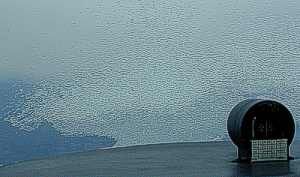 In 1993, the board considered the appeal of another airman who flew into an area covered by a SIGMET for occasional moderate to severe icing along his route from Marquette, Mich., to Milwaukee, Wis. The airplane crashed just short of the runway. The pilot argued that he was entitled to rely upon PIREP information indicating that there was "no icing at the altitude and along the route he planned." The board, however, disagreed: "It is not within the respondent’s discretion to pick and choose between the SIGMET and anecdotal PIREPS." Furthermore, it said, "the icing threat need not be blanketing the entire area at every altitude for it to be either known or dangerous, nor does the lack of extensive PIREPs at [the pilot’s] planned altitude and along the planned route legitimize his action."\5 Thus, the board made it clear that the main value of a PIREP — at least where icing is concerned — is to provide pilots of aircraft that are already fully equipped for icing conditions with information that might be useful in strategic flight planning. They do not give pilots an excuse to venture into those conditions in unequipped, or even partially-equipped, airplanes.
In 1993, the board considered the appeal of another airman who flew into an area covered by a SIGMET for occasional moderate to severe icing along his route from Marquette, Mich., to Milwaukee, Wis. The airplane crashed just short of the runway. The pilot argued that he was entitled to rely upon PIREP information indicating that there was "no icing at the altitude and along the route he planned." The board, however, disagreed: "It is not within the respondent’s discretion to pick and choose between the SIGMET and anecdotal PIREPS." Furthermore, it said, "the icing threat need not be blanketing the entire area at every altitude for it to be either known or dangerous, nor does the lack of extensive PIREPs at [the pilot’s] planned altitude and along the planned route legitimize his action."\5 Thus, the board made it clear that the main value of a PIREP — at least where icing is concerned — is to provide pilots of aircraft that are already fully equipped for icing conditions with information that might be useful in strategic flight planning. They do not give pilots an excuse to venture into those conditions in unequipped, or even partially-equipped, airplanes.
Playing "Russian Roulette"
On February 14, 1997, 23 years after its original ruling, the NTSB sent a cheeky valentine to a pilot who departed an Ohio airport in spite of weather information he obtained through DUAT, which included a valid SIGMET warning of the potential for severe icing along his route. To no one’s surprise, the flight terminated in a crash due to ice accretion. The airplane was destroyed and two passengers were injured. Among other things, the pilot based his NTSB appeal on the argument that the phrase "known icing conditions" is unconstitutionally vague (in violation of his rights under the Fourteenth Amendment), and that a charge of carelessness should not be sustained where the pilot is accused of flying into prohibited conditions for which a "precise definition" is not readily available. When it came up for review two years after the accident, the board flatly rejected the appeal. Referencing its precedent, the board asserted that the pilot had plenty of information and guidance available to him to reach what should have been the obvious conclusion that a flight in that airplane, on that day, and in that place was a grossly unsafe act. In what appeared to be a calculated insult — uncharacteristic of the legalistic language it usually employs — the board referred to the crash landing as "consistent with [the pilot’s] apparent willingness to engage in a kind of weather Russian roulette…."\6
Similar to its previous rulings, the decision in this case was not related to the outcome of the flight, but rather to the pilot’s decision to operate the flight into an area of forecast and reported icing, particularly in an aircraft "whose manual advised against entering weather conditions in which icing might occur."\7 This was not a naked airplane — it was "bikini clad." In other words, it was equipped with at least some anti- and deicing gear, but was not certified for flight into known icing conditions. Thus, the board’s highlighting of the manufacturer’s flight manual recommendations may presage an expansion of its icing philosophy to embrace any aircraft that is poorly equipped for what may lie ahead.
Footnotes — The "History of the Future"?
The footnotes to NTSB decisions often signal the direction of its movement, and the "Russian roulette" decision is pregnant with possibilities. In one footnote, the board toyed with the idea that "icing conditions" may not be limited to an AIRMET or area forecast, but might also refer to "an area in which the air temperature is forecasted to be at or near freezing, such that any liquid moisture might collect as ice on an aircraft moving through it…."\8 This suggests that in some future case the board might broaden its doctrine to include any briefing information that might indicate the presence of ice-forming conditions, making it tough for any pilot who gets a decent weather briefing to claim that s/he had an "inadvertent icing encounter."
 In another footnote, the board rejected the pilot’s argument that the absence of aircraft limitations prohibiting flight into known icing conditions somehow excused the pilot’s decision. It also rejected the suggestion that a manufacturer endorses operation in icing conditions simply because it supplies instruction on the correct use of an aircraft’s deicing equipment. (It was this discussion that revealed that the aircraft involved in this case was at least marginally equipped with anti- and/or deicing gear.) The fact that the aircraft manual "advised against entering weather conditions in which icing might occur" was enough to satisfy the board that the pilot was at least careless, if not reckless.\9
In another footnote, the board rejected the pilot’s argument that the absence of aircraft limitations prohibiting flight into known icing conditions somehow excused the pilot’s decision. It also rejected the suggestion that a manufacturer endorses operation in icing conditions simply because it supplies instruction on the correct use of an aircraft’s deicing equipment. (It was this discussion that revealed that the aircraft involved in this case was at least marginally equipped with anti- and/or deicing gear.) The fact that the aircraft manual "advised against entering weather conditions in which icing might occur" was enough to satisfy the board that the pilot was at least careless, if not reckless.\9
In still another footnote, the NTSB tipped its hat to the testimony of an FAA inspector "to the effect that no aircraft should venture into an area of severe icing because severe icing means that, even as to aircraft certified for flight into known icing conditions, the ice will accumulate faster than deicing equipment can remove it."\10
In footnoting these items, the board may have signaled its readiness to resolve a paradox in the regulations: Several of the rules allow pre-planned operation of aircraft into known severe icing conditions, as long as those aircraft are certified in accordance with certain criteria.\11 FAA literature, however, repeatedly defines "severe icing" as a "rate of accumulation … such that deicing/anti-icing equipment fails to reduce or control the hazard."\12 Indeed, one of the agency’s own advisory circulars warns that "pilots flying airplanes certificated for flight in known icing conditions should be aware that severe icing is a condition that is outside of the airplane’s certification icing envelope."\13 Considering that "forecasts" are also "known" once they become available to the pilot, flight into an area of forecast severe icing might someday be viewed under the law as flight into an uncontrollable situation — therefore "careless" — especially if the AFM advises against it, as it does in a number of large, ice-equipped aircraft. So far, this extension of the board’s reasoning has not been enshrined in case law, but it wouldn’t be wildly inconsistent with precedent to suggest that the board would look with contempt on anyone who places an aircraft in harm’s way knowing that it might not be up to the challenge. The argument is begging to be made, and one day some smart lawyer is bound to make it.
FAA: "Known" Vs. "Forecast"?
While the board has consistently upheld its interpretation of "known icing conditions," the FAA has interpreted things differently. [For reasons beyond the scope of this article, the relationship between the FAA’s power to interpret, and the NTSB’s power to overrule those interpretations, is in a state of flux. Caught in the middle of this maelstrom, of course, is the individual airman.] FAA regulations and literature are full of references to "known or forecast icing conditions," suggesting that there is a difference. For example, FARs 91.527 and 135.227 do not require an aircraft to be "certified" in order to depart into "known or forecast light or moderate icing conditions," as long as anti- or deicing equipment of some sort is available to protect selected components of the airplane. Such airplanes, however, often also carry a placard prohibiting flight into known icing conditions, making them equally subject to the restrictions of FAR 91.9 (required compliance with placards and limitations). Many other aircraft of earlier vintage are marginally ice-equipped, but have never been positively tested against any standard, and yet carry no published limitation because none was required at the time the aircraft was put into service.
Weird Guidance
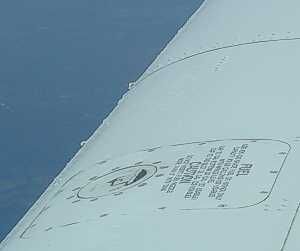 In 1981 — well after the board’s 1974 decision — the FAA issued Advisory Circular 135-9, "FAR Part 135 Icing Limitations," in an attempt to alleviate confusion, and to provide air taxi operators with useable guidance. This document — which is still in effect — only makes matters worse, however, by endorsing a distinction between "forecast" and "known" icing that is not recognized in NTSB case law, and by conjuring up a third category it referred to as "actual" icing. In part, it states that:
In 1981 — well after the board’s 1974 decision — the FAA issued Advisory Circular 135-9, "FAR Part 135 Icing Limitations," in an attempt to alleviate confusion, and to provide air taxi operators with useable guidance. This document — which is still in effect — only makes matters worse, however, by endorsing a distinction between "forecast" and "known" icing that is not recognized in NTSB case law, and by conjuring up a third category it referred to as "actual" icing. In part, it states that:
Aircraft equipped with functioning equipment…and a placard prohibiting operation in icing conditions may depart on a flight when light or moderate icing is forecast or reported to exist for the intended route to be flown. However, continued flight in actual icing conditions is not permitted since such flight does not comply with the placard or the operating limitation in the aircraft flight manual.\14
Ironically, this Advisory Circular only tells the pilot how to paint himself into the corner, not how to get out of it. Nevertheless, the FAA further advises the operators of older aircraft that:
Aircraft equipped with functioning equipment…and not placarded restricting operations in icing conditions may fly under IFR or VFR rules in known or forecast light or moderate icing and continue flight in actual icing conditions.\15
But wait! There’s no real difference between these aircraft! They may be identically equipped. It is strange advice, indeed, for the organization charged with "certifying safety" to endorse continued operation of an aircraft in icing conditions with equipment that has never been measured against any standard for effectiveness or reliability. Surely, if it is unsafe to operate an untested aircraft with a placard, it is equally unsafe to operate such an aircraft without one. Placards have no special magic. While it is within the FAA’s power to require the retroactive installation of a placard against flight into known icing conditions in any airplane that is not certified for it (by issuing an Airworthiness Directive), the agency has simply left this loophole open.
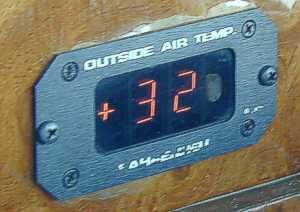 If you’re not shaking your head yet, consider that this guidance applies only to air taxi operators — who, in theory, are held to a "higher standard of safety." [Large aircraft operators have virtually the same rule under FAR 91.527, but no Advisory Circular.] Yet according to AC 135-9, a 135 operator could load passengers into a twin with an untested package of ice protection gear (which could never achieve certification even if it were tested because half the components required for certification are missing) and a placard against known icing conditions, fly all day long in known icing conditions anyway (to hell with the placard, I guess), keep his fingers crossed in hopes that ice doesn’t form, and press on to the destination. But once he gets there and the passengers get off, he can’t deadhead home because that would be Part 91, and the placard makes it illegal. Go figure. We may never know how many times the FAA has shrugged its shoulders rather than have to explain this contradiction to a judge.
If you’re not shaking your head yet, consider that this guidance applies only to air taxi operators — who, in theory, are held to a "higher standard of safety." [Large aircraft operators have virtually the same rule under FAR 91.527, but no Advisory Circular.] Yet according to AC 135-9, a 135 operator could load passengers into a twin with an untested package of ice protection gear (which could never achieve certification even if it were tested because half the components required for certification are missing) and a placard against known icing conditions, fly all day long in known icing conditions anyway (to hell with the placard, I guess), keep his fingers crossed in hopes that ice doesn’t form, and press on to the destination. But once he gets there and the passengers get off, he can’t deadhead home because that would be Part 91, and the placard makes it illegal. Go figure. We may never know how many times the FAA has shrugged its shoulders rather than have to explain this contradiction to a judge.
They say it’s dangerous to predict how any court will rule — and there is no appellate history focusing directly on these points that I know of — but considering the breathtaking sweep of the "Russian roulette" case it’s hard to imagine that the board would not find that flight into known icing conditions in an aircraft with untested, uncertified equipment is at least careless — placard or no placard — no matter what some other rule or guidance might permit. Again, the argument is waiting to be made.
The Coming Train Wreck
To make matters still worse: After decades of bandying terms like "known icing conditions" and "forecast icing conditions," the FAA finally emerged from the mist in December 2000, defining its terms in accordance with the recommendations of an icing conference it conducted in 1996. Now, it proposes to say that "known icing conditions" are "atmospheric conditions in which the formation of ice is observed or detected in flight": the very definition that has landed so many airmen in court!\16 Thus, the FAA and the NTSB are on a head-on collision course, with the FAA permitting operations that the board long ago determined were illegal. To add further irony, the FAA has been happy over the years to use the board’s definition as a bludgeon to win in court. It will be interesting to see whether its lawyers continue to haul out this weapon now that the agency proposes to put its "new-old" definition in writing. Don’t bet your certificate that they won’t.
Case Law As "Vicarious Experience"
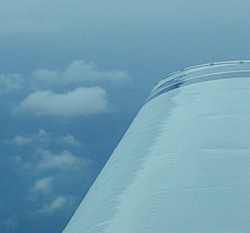 So, if the FAA and the NTSB can’t get in step with each other, what’s a lowly airman supposed to do?
So, if the FAA and the NTSB can’t get in step with each other, what’s a lowly airman supposed to do?
Well, for one thing, the basis of any rational system of justice is the right of the governed to know what behavior is acceptable before they do something. At the same time, pilots have an obligation to make an effort to know what minimum standard of care is expected of them before taking action. This is a burden similar to that borne by doctors, lawyers, law enforcement officers, and others in society who have special training and skills, and who exercise special privileges because of them. Peoples’ lives depend on how well those burdens are carried, and even though there is never any guarantee that things will turn out all right, we might all be a little closer to that goal if we consider the experience of others. Case by deliberate case, the NTSB is telling us how a regulation will be applied when a problem arises. Shouldn’t we take that into consideration beforehand?
These aren’t just dusty tomes of law. They may not be as poignant or exciting as the works of St. Exupry or Gann, but they are real stories about real people who faced a set of circumstances and made decisions that turned out badly. They include at least some of the dramatic events of which great literature is made: injury, death, destruction of property and the torment of people who are terrorized for life by the aftereffects of bad choices. We who are faced with making decisions about icing conditions are engaged in a long-term game of "connect-the-dots" in which the NTSB does the dotting and we do the connecting. It’s these connections that form the boundaries that tell us when we are inside — or outside — the norms of acceptable practice. As an interpreter of the rules, the board is, over time, telling us what it thinks the word "safety" means. And it is not saying — as some would suggest — that the only acceptable level of safety is found at home in bed.
Where Do You Draw The Line?
The board is not asking us to become mindless lovers of rules. As legally muscle-bound as our society has become, we do not need — nor can we ever devise — a rule for every set of circumstances. A regulatory agency cannot be expected to write such a rule, but it must write something. So it draws a line — like a speed limit — and tries to apply it, however imperfectly. It has to be able to count on people to take enough personal responsibility to exercise clear, independent, and reasoned judgment. Those of us who love to fly are as frustrated as anyone by the creeping intrusions of fine-print into every aspect of life, and are equally frustrated by the repeated, well-publicized examples of pilots who refuse to apply even the most rudimentary principles of personal restraint to their behavior in airplanes: For it is often this very behavior that serves an excuse for further regulation.
Questions of legality are not automatically questions of safety. Anyone who has ever driven 60 in a 55 — and been ignored by a cop — knows that the risk of a measly five extra miles per hour isn’t that great. But then, anyone who has ever been ticketed for doing 60 in a school zone should know that he has crossed the line. There is a fuzzy boundary in there someplace where minor cheating becomes foolhardy risk-taking, and no one can tell you precisely where it is. But it is there, and even the most libertarian among us embraces some line-drawing. While I may hate the rules that apply to me, I am happy to see others restrained from harming me through their lawlessness. Even the most rabid government-hater will occasionally be heard to say, "Well, there oughta be a law against that!"
Get The "Ticket"
While it is both futile and dangerous to suggest mindless obedience, I am arguing for a conservative approach: When it comes to flight into "known icing conditions" the NTSB is basically right.
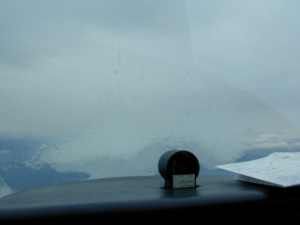 Consider an analogy: Most of us would agree that for the average pilot it would be stupid to practice aerobatic maneuvers in a Normal Category airplane. It’s not impossible. Bob Hoover did it — and beautifully.\17 But Hoover has extraordinary talent, training, experience, and discipline. He enjoys being alive, and he knows that in order to stay that way he must account for every detail of his environment — to control what he can, and to adjust for what he cannot. The level of his control and discipline is what makes him the consummate air show professional that he is. Most of the rest of us, however, wouldn’t even consider wringing-out a 172 the way Hoover did a Shrike, because even if we could account for all the variables, we might never develop the necessary skill. Ever hear anyone complain about this? Ever hear anyone whine that the FAA is cutting into the utility value of his Skyhawk by making it illegal to practice Cuban Eights in one? Probably not. "If you want to do aerobatics," we say, "buy an Aerobat."
Consider an analogy: Most of us would agree that for the average pilot it would be stupid to practice aerobatic maneuvers in a Normal Category airplane. It’s not impossible. Bob Hoover did it — and beautifully.\17 But Hoover has extraordinary talent, training, experience, and discipline. He enjoys being alive, and he knows that in order to stay that way he must account for every detail of his environment — to control what he can, and to adjust for what he cannot. The level of his control and discipline is what makes him the consummate air show professional that he is. Most of the rest of us, however, wouldn’t even consider wringing-out a 172 the way Hoover did a Shrike, because even if we could account for all the variables, we might never develop the necessary skill. Ever hear anyone complain about this? Ever hear anyone whine that the FAA is cutting into the utility value of his Skyhawk by making it illegal to practice Cuban Eights in one? Probably not. "If you want to do aerobatics," we say, "buy an Aerobat."
Yet, over the years, I’ve heard pilots complain that if they have to stay out of areas of forecast icing, they might as well make a lawn ornament out of their airplane, because they won’t be able to fly it more than four months out of the year. For this, they blame the government. Now, I would like to feel sorry for them — the way I would feel sorry for someone who buys a Volkswagen Beetle for the purpose of towing a 36-foot yacht. But as much as the science of meteorology has improved in the last quarter-century, ice forecasting hasn’t improved enough to give even the best weather-busting pilot the kind of control over his environment that Bob Hoover has over his. Certification for flight into known icing conditions should be viewed as the minimum ticket for admission to the known-icing game, the same way Acrobatic Category certification is the minimum ticket to the practice of inverted flat spins. There is one notable difference: Certified icing gear should be viewed as something that keeps you afloat while you find your way out of an actual icing encounter, not as the stuff that gives you permission to slog along forever in deteriorating conditions.
Don’t Push Your Luck
Every winter, the aviation press is filled with testosterone-drenched strategies for penetrating icing conditions, aimed at pilots flying unequipped aircraft. Many of their authors can’t resist spicing things up with the story of their most harrowing encounter with ice, thinking to impress the reader with superior skill, luck, or nerve — not realizing that in so doing they merely illustrate their own foolishness in taking pointless risks. Much of this strategizing would be excellent advice for those who have "purchased the ticket," but if you’re in a naked — or bikini-clad — airplane and penetrate visible moisture in an area of forecast icing, you’re surrendering yourself to Fate. That’s as illegal today as it was in Marion, Ind., in 1972. And, like it or not, this exposes you to enforcement action whether you crash or not. It’s as profoundly irresponsible to suggest otherwise, as it is to advise someone to snap-roll a 172 when no one is looking. Escaping detection isn’t the point. Safety is the point. [It is important to point out here that icing forecasts typically encompass a block of airspace having both vertical and lateral dimensions, and often describe the phenomenon in which the forecast condition is expected, e.g., "in clouds and precipitation," or "above the freezing level." Generally, in order to be within the forecast area, and thus covered by it, one must be operating within that block and within the described phenomenon. Thus, one may be inside the lateral limits of a forecast, but not in the "forecast area" because some other condition is not met.]
 Genuine risk is tough to quantify, and forecasting isn’t that precise. A pilot might be able to penetrate a thin, cold overcast, for instance, without exposing himself to much real danger — even if it is technically illegal. On the other hand, a brief approach through an innocuous-looking blanket of low-lying clouds can result in a truly terrifying encounter with freezing rain, even when the forecast only calls for "light-to-moderate icing." Experienced weather pilots will tell you that icing conditions are capricious. Most of the time they fail to materialize, causing pilots to become cynical about the weather bureau’s chronically dismal forecasting. [Honestly, folks, they do the best they can with what they have. We hate them when they warn us, and we hate them when they don’t. Wrong or right, they can’t win.] When icing actually does occur, it might stay "light" for hours, or go "severe" quick as an eyelash. When you hold lives and property in your hand (and you do, even when you’re solo — unless you live in a vacuum), you have an obligation to prepare for both possibilities.
Genuine risk is tough to quantify, and forecasting isn’t that precise. A pilot might be able to penetrate a thin, cold overcast, for instance, without exposing himself to much real danger — even if it is technically illegal. On the other hand, a brief approach through an innocuous-looking blanket of low-lying clouds can result in a truly terrifying encounter with freezing rain, even when the forecast only calls for "light-to-moderate icing." Experienced weather pilots will tell you that icing conditions are capricious. Most of the time they fail to materialize, causing pilots to become cynical about the weather bureau’s chronically dismal forecasting. [Honestly, folks, they do the best they can with what they have. We hate them when they warn us, and we hate them when they don’t. Wrong or right, they can’t win.] When icing actually does occur, it might stay "light" for hours, or go "severe" quick as an eyelash. When you hold lives and property in your hand (and you do, even when you’re solo — unless you live in a vacuum), you have an obligation to prepare for both possibilities.
Whether or not the FAA ever brings its literature, its regulations, or its policies into line with the board’s opinions, the NTSB isn’t likely to reverse itself after years of consistent rulings. Until we can account for variables the way a professional air show pilot does, it would be wise to heed the NTSB’s warning to the players of Russian roulette: "A prudent pilot," it said, "seeks to eliminate, not to discount, the hazards to safe flying that adverse weather can produce."
Afterword
The recent appellate court decision in Garvey, FAA vs. NTSB and Richard Lee Merrill, so ably laid out by Phil Kolczynski in "A Dangerous New Precedent In FAA Enforcement Law" came to my attention after this article was completed, and profoundly changes the context in which the cases and policies I cited must be viewed.
 After reviewing Mr. Kolczynski’s analysis of Merrill, I think it is now more important than ever to take a conservative approach to operations in icing conditions. The FAA’s proposal to sanctify a definition of "known icing conditions" that is contrary to the NTSB’s definition might, at first, seem to be a signal that the agency is about to liberalize its approach. But this would be a dangerous interpretation. Remember, it is the FAA that brought action in Administrator vs. Bowen, and all the later cases that rested upon its foundation. That means that somewhere in its appeal briefs the agency has repeatedly used Bowen to make its case. It will likely continue to do so. It also means that, with its "new-old" definition the FAA can call whatever tune it wants, whenever it wants, and that it can change the tune in the middle of the dance to suit the desired outcome. It’s the equivalent of a cop being able to change the speed limit after s/he pulls you over. It is nave to think that such power won’t be abused.
After reviewing Mr. Kolczynski’s analysis of Merrill, I think it is now more important than ever to take a conservative approach to operations in icing conditions. The FAA’s proposal to sanctify a definition of "known icing conditions" that is contrary to the NTSB’s definition might, at first, seem to be a signal that the agency is about to liberalize its approach. But this would be a dangerous interpretation. Remember, it is the FAA that brought action in Administrator vs. Bowen, and all the later cases that rested upon its foundation. That means that somewhere in its appeal briefs the agency has repeatedly used Bowen to make its case. It will likely continue to do so. It also means that, with its "new-old" definition the FAA can call whatever tune it wants, whenever it wants, and that it can change the tune in the middle of the dance to suit the desired outcome. It’s the equivalent of a cop being able to change the speed limit after s/he pulls you over. It is nave to think that such power won’t be abused.
I concur with Mr. Kolczynski’s call for action to seek the overturning of Merrill by whatever means necessary, including direct Congressional intervention, as well as the development of a legal defense fund to advance a clean test case to the Supreme Court. The right of independent judicial review in the administrative process is as fundamental in its own context as any other civil right. Anyone who wants to fly needs to pay attention to this, especially those who seek to make flying their life’s work. Until Merrill is overturned (and after), the safest course of action is to stay out of "known icing conditions" unless you’ve "bought the ticket." Even then, be careful where you sit!
Notes:
1. Administrator vs. Bowen, EA-585, 2 NTSB 940 (1974).
2. Administrator vs. Bowen, Petition for Reconsideration, EA-603, 2 NTSB 950 (1974).
3. Bowen Petition.
4. Administrator vs. Irmisch, EA-911, 2 NTSB 2409 (1976).
5. Administrator vs. Groszer, EA-3770 (1993).
6. Administrator vs. Boger, EA-4525 (1997).
7. Boger.
8. Boger.
9. Boger.
10. Boger.
11. FAR 91.527(c) and 135.227(e).
12. Advisory Circular 91-51A, "Effect of Icing on Aircraft Control and Airplane Deice and Anti-ice Systems," p.4. See also, Aeronautical Information Manual, Paragraph 7-1-19.
13. AC 91.51A, Paragraph 5(b)(3).
14. "FAR Part 135 Icing Limitations," Advisory Circular 135-9, Paragraph 7(b), p. 3.
15. AC 135-9, Paragraph 7(a), p. 3.
16. Federal Register, Vol. 65, No. 247, December 22, 2000, p. 80985.
17. Bob Hoover’s Shrike Commander carried an Experimental Airworthiness Certificate, but it is basically a stock airplane built to Normal Category standards.
18. Boger.


































